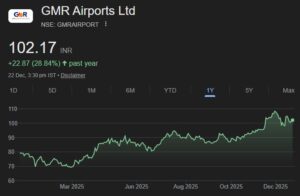Samir Arora has been an equity evangelist since his days as Fund Manager at Alliance Mutual Fund. Samir Arora made his millions out of buying and holding stocks of Indian companies so it is not surprising that he has been exhorting fellow Indian investors to also discover the wonders of the equity route and buy stocks of well managed companies with excellent fundamentals. Samir Arora is, therefore, not able to hide his acute frustration that fellow Indians pay no heed to his words of wisdom. Samir Arora points out that the mutual funds – the true barometer of the small investor’s participation – hold only 3% of the Indian stock market equities – implying that the bulk of the explosive gains that the stock markets have witnessed over the past decade has been reaped by foreign investors.

Samir Arora is not one to give up easily and so he makes another attempt to persuade fellow investors to adopt the equity route by laying some simple and easy to follow investment techniques.
Tip No. 1: Buy Stocks Steadily – Do not time the market:
Samir Arora notices that most investors are plagued by indecision as to when to buy stocks. The best time to buy is when the stock market is on a decline but most investors are unable to commit because of a fear that the market will plunge even lower. That is why in October 2008, though the market had hit rock bottom at 10,000 Sensex, most investors could not muster the courage to buy in the fear that the Sensex would plunge even lower.
Samir Arora echoes the timeless wisdom of Ramdeo Agarwal who bluntly called the decision making paralysis of the investor as “the biggest cancer afflicting the stock market“. Ramdeo Agarwal made it clear that investors should never try to “time the market” because it is impossible to buy at absolutely the lowest point in the market and if investors try to do it, they lose out on wonderful opportunities that come their way (see Raamdeo Agrawal on timing the market).
Samir Arora has a practical solution to solve the decision making paralysis that investors suffer from and that is to put their investment decisions on “auto-pilot”. Samir Arora states that the investor must first do his homework to identify the stocks that he wants to keep in his portfolio (Samir Arora gives tips on this as well) and then slowly and steadily buy these stocks irrespective of where the Nifty or Sensex is headed.
Samir Arora also states that when making the investment, investors must develop a stoic attitude of “I have not much to lose” even if the market is on a declining trend. This is possible if the amount the investor is investing is a small sum compared to his total wealth. Samir Arora explains that with this approach, if the value of the investments fall, the investor is not unduly worried because the money that he has committed are not very large and he still has funds available with with he can average to take advantage of the declining prices. On the other hand, if the value of the investments rises, the investor experiences a boost of confidence and is mentally better prepared to invest larger sums of money. This is the sure-fire way to making long-term wealth from equities emphasizes Samir Arora.
Tip No. 2: Buy Stocks as you buy Land or Jewellry:
Samir Arora points out that there is a peculiar dichotomy in the way investors react to stocks as compared to the other investments that they make. Samir Arora points out that when investors buy a house or a plot of land for investment purposes, they are happy to let it be for several years without getting perturbed. Investors do not, on a weekly, or even monthly, basis call up their broker to check whether the prices of real estate have fallen or risen. Similarly, when investors buy gold or jewelery, they are buying for their “son or daughter’s wedding” which is to take place after several years and they are content with letting the gold and jewelry rest in the Safe box.
But, when it comes to stocks, investors are very impatient and jittery says Samir Arora. Investors cannot resist the impulse to check the stock prices on a regular, even daily, basis and a slight downtrend in the prices is enough to send their pulse racing and heart palpitating. The obsession to get paranoid over ordinary fluctuations in the stock prices is the investor’s biggest failing emphasis Samir Arora.
Samir Arora‘s advice can be implemented in a practical way to cure this malady of investors. When investors buy a stock, they must convince themselves that what they are buying is not some little thing that bounces two percent here and there everyday but a “full fledged business“. Investors must psyche themselves into believing that they are “part-owners” of the business and are in the stock for the long-haul. Lets take a practical example to illustrate Samir Arora‘s point. If investors buy stocks of Tata Motors because they feel that it is a good way to play on the India-consumption story, then they must picture themselves as “partners” with Ratan Tata and the rest of the top management team of Tata Motors. Every time, investors see a Tata Indica or Tata Nano car on the road, they must feel a sense of pride “that is made by my company“. “Ratan Tata is not going to dump the Tata Motors stock only because it plunged 10% in trade, so why should you do that?”
Tip No. 3: Be Patient:
Samir Arora gives examples to prove his point on how patience is the investor’s best virtue. Samir Arora points out that his all-time favourite stock is HDFC Bank and that he invested in the stock of HDFC Bank since its IPO in 1995. Samir Arora reminisces that the HDFC Bank IPO was priced at Rs. 30 and that for three years, from 1995 to 1998, the stock did not budge. That would have tested the ordinary investor’s patience and he would probably have dumped the HDFC Bank stock on the logic that fixed deposits would have given a higher return that the HDFC Bank stock. Samir Arora stayed put because he could see that HDFC Bank was growing at 30% pa and if the stock price did not move in tandem, it only meant that HDFC Bank was getting cheaper. Samir Arora was rewarded for his conviction when the stock price spurted to Rs. 250 – a 7 bagger. However, Samir Arora has still held on and at the current price of about Rs. 2,500, Samir Arora now has his hands on a 80-bagger!!
Tip No. 4: Don’t Buy A Stock Only Because It Is “Cheap”:
Samir Arora cautions against the general trap that investors fall into of buying stocks only because they are quoting at low PE or PBV. Samir Arora points out that such stocks are cheap in the past, they are cheap in the present and will continue to be cheap in the future because there is nothing happening to change that ‘cheapness’. The counter point to this theory is that investors should not shun away from stocks only because they are “expensive”. Samir Arora again cites the example of HDFC Bank to buttress his point. HDFC Bank has always been “expensive” if one looks at the traditional parameters of PE and PBV but that has not stopped it from being a multi-bagger several times over because the size of the opportunity is immense and the management of HDFC Bank knows how to exploit that opportunity.
Some other “expensive” stocks that one can think about are Nestle and even the newcomers like Jubilant Foodworks and Lovable Lingerie which have an enormous market to grow in (see also Raamdeo Agarwal’s take on Expensive Stocks).
Tip No. 5: Buy A Stock On the verge of change:
Samir Arora’s next tip is a logical corollary to his previous one. Samir Arora says that investors must try and anticipate and recognize change early because the maximum amount of money is made early in the cycle. Samir Arora points out that change happens in the company, the industry, the perception of a company, in corporate governance and so on. The investor must recognize change at any level – micro or macro and be ahead of the curve.
Rakesh Jhunjhunwala‘s words of timeless wisdom ring in the ears “In equities, the key lies in predicting what tomorrow is going to be. The tomorrows are going to determine the equity prices. We can’t see tomorrow; but we can anticipate tomorrow“ (see Rakesh Jhunjhunwala Said Buy Titan …. At Rs. 65!).
Two practical examples where Samir Arora’s theory can be used is the issue of inflation plaguing the markets presently. A shrewd investor with his ears to the ground would have recognized the signs that inflation was rising and predicted that interest rates would be raised by RBI to curb inflation. Such an investor would have lightened his holdings of rate sensitive stocks like Banks and Autos and bought into the defensives like Pharma and FMCG. After that, the investor would have looked for signs that the inflation is peaking and positioned himself in rate sensitive stocks like Banks & Autos – ahead of the curve when the pessimism is at the peak. This way, when the tide changes and interest rates begin to soften, the rate sensitive stocks like banks and autos and even realty will spurt and the investor will take home a handsome return.
Another example where Samir Arora’s advice can be implemented is the sorry state of the infra stocks. The infra stocks, which were darlings of the market a few months ago, are presently languishing at 52 week lows and are close to their book values owing to a general slow down in orders. There are several reasons for the slow down. One is the high interest rates and the second is a decision making paralysis in the Government owing to the CWG scam and the 2G scam etc. But the intelligent investor knows that these phases can’t last for long and will change. If the investor buys into these stocks at the height of pessimism, he is bound to take home a fortune when the tide changes and these stocks become the fancy of the market once again (see also Infra Stocks: A Time To Buy).
Tip No. 6: Buy “High Confidence In Reasonable Return” Stocks:
Samir Arora’s next tip is aimed at those investors who are perpetually looking for “multibagger” stocks. Samir Arora points out that such investors are never content with buying stocks of well known companies in the mistaken impression that as such stocks have already been “discovered”, there are no chances of multibagger returns from them. So, such investors ignore well known companies and spend all their time looking in nooks and crannies trying to fish out the “unknown multibagger stock”. This is a very dangerous investment practice cautions Samir Arora and warns that such investors often end up with worthless stocks of dubious companies.
Samir Arora advices that the best way to invest is to buy “high confidence” stocks that one can can be certain will deliver “reasonable returns” of 20% over several years. Samir Arora advices buying stocks of fundamentally strong companies like HDFC Bank and TCS that one can be sure about.
Samir Arora’s advice does make a lot of sense. Our own analysis shows that if a stock grows consistently at 15-25% CAGR, an investor would have his multibagger with no effort or risk at all (see Blue Chips Stock Portfolio: Compounding Multi-bagger).
Tip No. 7: Sell When the Time Is Right:
Samir Arora says that there are two circumstances in which an investor should exit and sell a stock. The first is when the fundamentals of the stock change for the worse and it does not appear to a temporary phenomenon. The second is when the price of the stock reaches irrational levels. Samir Arora cites the classic example of Hindustan Unilever and Infosys to illustrate his theory. Samir Arora points out that while Hindustan Unilver has excellent management and what not, its rate of growth was extremely low owing to the intense competition around it. There was neither volume growth nor margin expansion happening and that did not appear to be a temporary phenomenon says Samir Arora. So, it made sense to get rid of HUL from the portfolio says Samir Arora.
Samir Arora gives the counter example of Infosys, a stock whose valuations reached stratospheric heights, on the irrational belief that it would continue to grow at a scorching pace. Samir Arora rues that despite his experience, he also got taken in by the hype and did not sell the stock till it was too late. Samir Arora ultimately made a lot of money on the stock though not as much as he would have made if he had used his common sense and sold at the peak.
Samir Arora gives the third example of Zee Telefilms which he bought at a discount rate because there were some corporate governance issues etc even though the business model of the company was robust. Samir Arora recalls having put the price target of Zee at Rs. 250 at a time when it was quoting at Rs. 100. His prediction came true because the stock multiplied ten times. However, even when ZEE soared to Rs. 1600, Samir Arora says he failed to sell. He sold much later when the price plunged to Rs. 700 and though he took home a lot of money, he rues not having sold ZEE at Rs. 1600 when the valuations were clearly irrational.
Samir Arora’s point is very valid because it shows how even a hard-nosed fund manager can “fall in love” with his stock picks and refuse to see common sense. So, this is something that every investor must guard against.
Tip No. 8: Keep a “Price Target” in Mind:
Samir Arora suggests that to avoid “falling in love” with a stock and to keep a dispassionate view, an investor should keep a price target in mind when he buys the stock. When the price target is reached, the investor should coolly and dispassionately review his investment thesis and decide objectively whether it is worth his while to continue holding the stock or to cash in on the gains.
Tip No. 9: Four Things to look for in a Stock:
Samir Arora gives some practical advice to deal with the all-important question “How do you identify good companies from the bad ones“. Samir Arora suggests that there are four aspects that every investor must look for in a potential business.
(i) Least Capital Expenditure:
(ii) No Borrowings: This is a natural corollary to the first point. If the capital expenditure is minimal, there would be no need for borrowings.
(iii) High Return on Capital Employed: Samir Arora suggests that the Return on Capital Employed should not be less than 25%.
(iv) Dividends: Samir Arora suggests that dividend paying companies are preferred because firstly the dividend yield provides a natural cushion against a downside and secondly, such companies have a high cash flow (see High Dividend Yield Stocks To Buy).
Tip No. 10: Concentrated Portfolio:
Samir Arora‘s theory of stock-picking, if followed, will not yield more than 10 to 15 companies. So, a corollary of Samir Arora‘s theory is that one should have a concentrated portfolio. This makes a lot of sense if one is buying into “high conviction & reasonable return” stocks as suggested by Samir Arora. If an investor has too many stocks in his portfolio, he will lose focus into his holdings and some will gain and some will lose, resulting in a poor return. On the other hand, if the portfolio is concentrated, one multibagger can result in handsome gains (see also Rakesh Jhunjhunwala’s Portfolio: Concentrated vs. Diversified).
Samir Arora’s Stock Portfolio Picks
[download id=””]






Res sir ,
i heard your interview on cnbc aawaj .
Ilike your approch to study stocks –parameters like value, growth of the stock , mannagement , future of the company . I am following your investment technique’s . sir u have mentioned in interview on cnbc — emerging sec like sports goods company — is it CRAVATEX ??. i study this it looks gd pick for long.
waiting FOR YOUR VALUABLE rely SIR
regards
drvivek patil .
i appreciated your ideas,
if you are god, pl help always investor